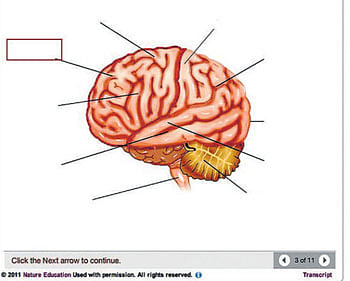e-textbooks make learning interactive

When a college textbook, ''Principles of Biology,'' comes out from the Nature Publishing Group in January, one place it won’t be is on the shelves of school bookstores.
That’s because the book was designed as digital-only. Students will pay not for a printed edition at a bookstore, but for permanent access on the Internet ($49 or Rs 2,600).
And when they open the book on their laptops, tablets and smart phones, they will find other differences, too. True, the text is packed densely with definitions and diagrams – it is meant to teach college-level science, after all, and is from the publishers of the august journal Nature.
Still, this isn’t your usual technical tome. The pages have some pizzazz: They are replete with punchy, interactive electronic features – from dynamic illustrations to short quizzes meant to involve students rather than letting them plod from one section to the next. Audio and video clips are woven into the text.
“We want to take advantage of the things only digital media can do, and that are superior to print, to broaden the ways students learn science,” said Vikram Savkar, publishing director at Nature Publishing.
The book offers many dynamic, interactive illustrations. As students learn about the genetic code, for example, they can match amino acids to corresponding sequences on the double helix to understand how an entire protein emerges from genetic sequences.
“Principles of Biology,” Savkar’s brainchild, was two years in the making. A Harvard graduate with degrees in physics and classics, he wanted to move beyond early e-textbooks that were essentially static electronic reprises of the print versions. Most science e-books “are still PDFs of print books that are scanned and put online,” he said.
“But if the best way to learn is to see something moving, we teach that through a piece of interactive media, integrated right into the text,” he said. “If a quiz is the best way, we do that.”
Nature Publishing, a division of Macmillan Publishers, chose to make the browser central to the textbook, rather than creating individual apps for students to use on electronic devices – an expensive procedure that might require as many as 20 versions, Savkar said.
Instead, the website senses which device a student is using, say a laptop or a tablet, and delivers the appropriate format to the browser.
“This is a world where students have many devices, and they expect to have whatever they need when they need it,” he said. “But no matter what device they go to, the browser is there, and therefore our textbook is there, too.”
The biology text, tested this past year at some campuses of California State University, is the first of a series of digital textbooks planned by the company.
Other publishers are also experimenting with technologies that enliven the static pages of electronic technical textbooks and documents. This summer, Wolfram Research, known for its computing software Mathematica and its Web search tool Wolfram Alpha, introduced a new format as well as a free player with a built-in math engine.
The format allows for routine use of interactive illustrations. With them, readers can change a problem’s parameters and watch as the illustration recomputes and re-forms accordingly. On an image of an oil slick, for example, you might move the contour outline to a point where the slick has a given thickness, or superimpose a photographic view over a computed one.
Conrad Wolfram, strategic director and European co-founder at Wolfram, says he hopes the company’s technology will be used not only in textbooks, but also in business reports and journal papers. “You can add this dynamic content without hiring a host of programmers to create interactivity,” he said.
Deccan Herald is on WhatsApp Channels| Join now for Breaking News & Editor's Picks